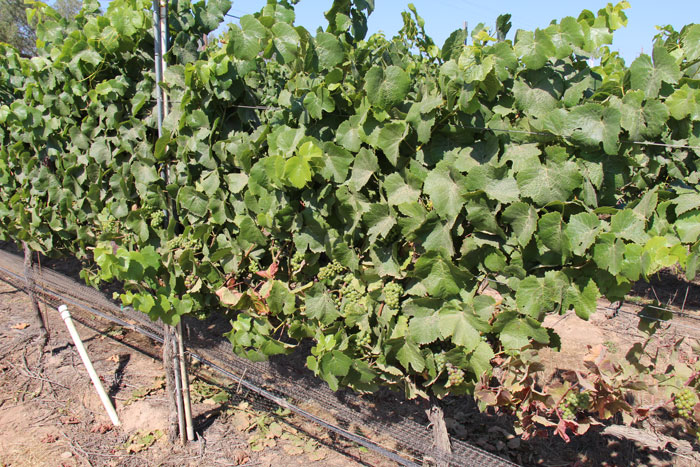
Unusually warm temperatures since the first of the year have accelerated development of Napa Valley’s 2015 wine grape crop, prompting concerns that an early bloom could leave vines more vulnerable to frost later this spring.
But, so far, so good. “Everything is off and running for a good start to the season,” says Al Wagner, with fingers crossed.
As director of Vineyard Operations for Clos du Val Winery, he oversees 347 acres of vineyards in four of Napa Valley’s 15 subappellations – Los Carneros, Oakville, Stag’s Leap District and Yountville. There he grows such varieties as Cabernet Franc, Cabernet Sauvignon, Chardonnay, Merlot, Pinot Noir and Sauvignon Blanc.
Typically, relatively cold temperatures prevail here for much of the winter. However, this past winter, frost warnings were issued for just two nights in the area of his Carneros vineyards.
Hastened by the mild winter weather, buds on his Chardonnay and Pinot Noir vines in Carneros began opening shortly after Valentine’s Day. That was about two weeks earlier than average for the past five years and a month sooner than the 10-year average for these vineyards. Since then, temperatures have remained uncommonly warm, frequently reaching the upper 70s to low 80s, Wagner notes. Bud break started on the last of his vines, some blocks of Cabernet Sauvignon in Oakville, in the third week of March.
By the first of April, his vineyards were sporting shoots from 12 to 18 inches long.
“I wouldn’t be surprised if some Chardonnay growth in Carneros reached the top of the stakes and the vines had a full canopy by mid-April,” he says.
Such accelerated development points to the likelihood of vines beginning to bloom well before mid-May, considered the end of Napa Valley’s frost season. Typically, Wagner starts seeing blooms in his vineyards between then and the end of May.
“We know we’ll see an early bloom in Napa Valley this year,” he says. “Right now our biggest concern is getting through the frost season without any damage to our crop.”
Wagner relies on wind machines to fend off any frost threat. Growers who use water from creeks and rivers for frost protection face pumping restrictions this spring due to low stream flows. With few wells to provide water for their vineyards, most Napa Valley growers store water in ponds and reservoirs. Such supplies would help growers protect their vines from frost, reducing, of course, the amount of water available to irrigate their fields the rest of the season.
In the face of the continuing drought, that’s no small concern. “It will make growers more cautious about how they use water this year,” Wagner says.
Although he’s measured anywhere from 19 to 21.5 inches of rainfall in his vineyards since the start of last July, none of any significance has fallen since December. Usually his annual rainfall totals around 24 to 30 inches, Wagner reports.
“The ponds and reservoirs in the valley are full, and there is still some moisture left in the soil, although not a lot, in some areas,” he says. “Depending on how much frost protection is needed, growers here should have enough water to make it through harvest. Irrigation management will be critical.”
He expects to get some idea of the year’s crop size by about the third week of April, after flowering and the fruit begins to form.
“Based on the number of clusters we’re seeing at the first of April, this year’s crop looks to be average to a little larger in size,” Wagner says.
About the Author(s)
You May Also Like




